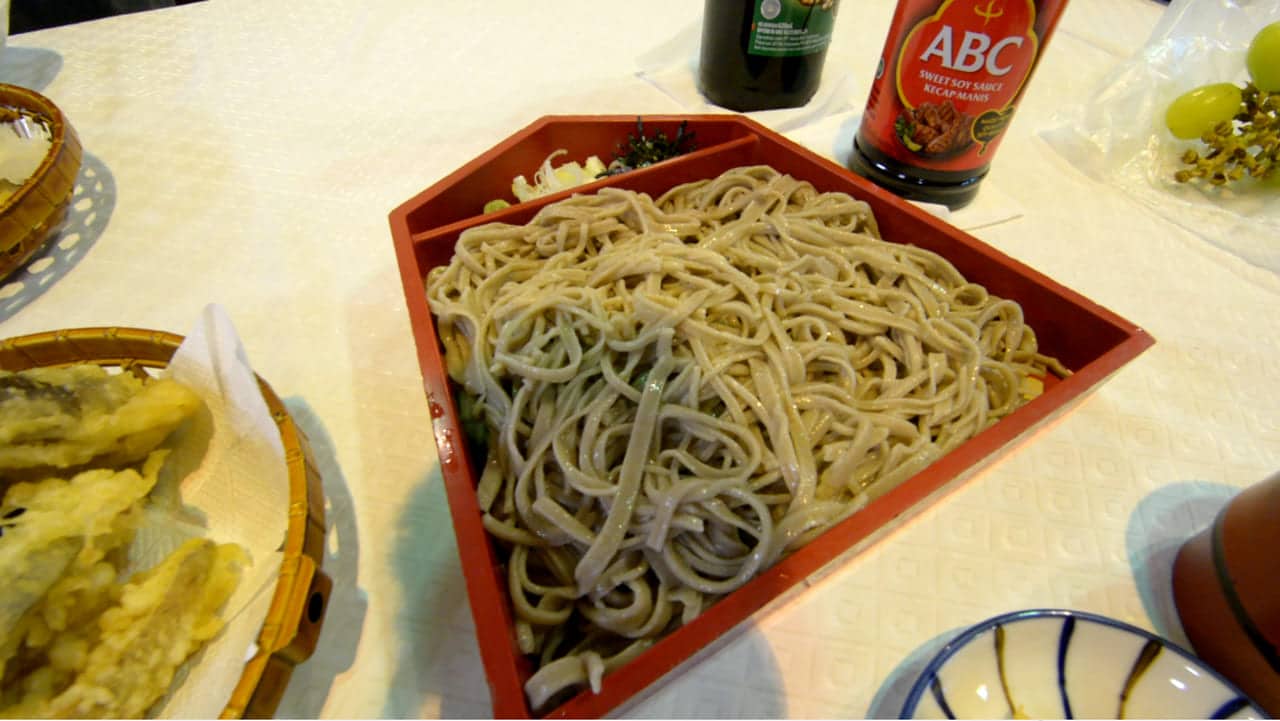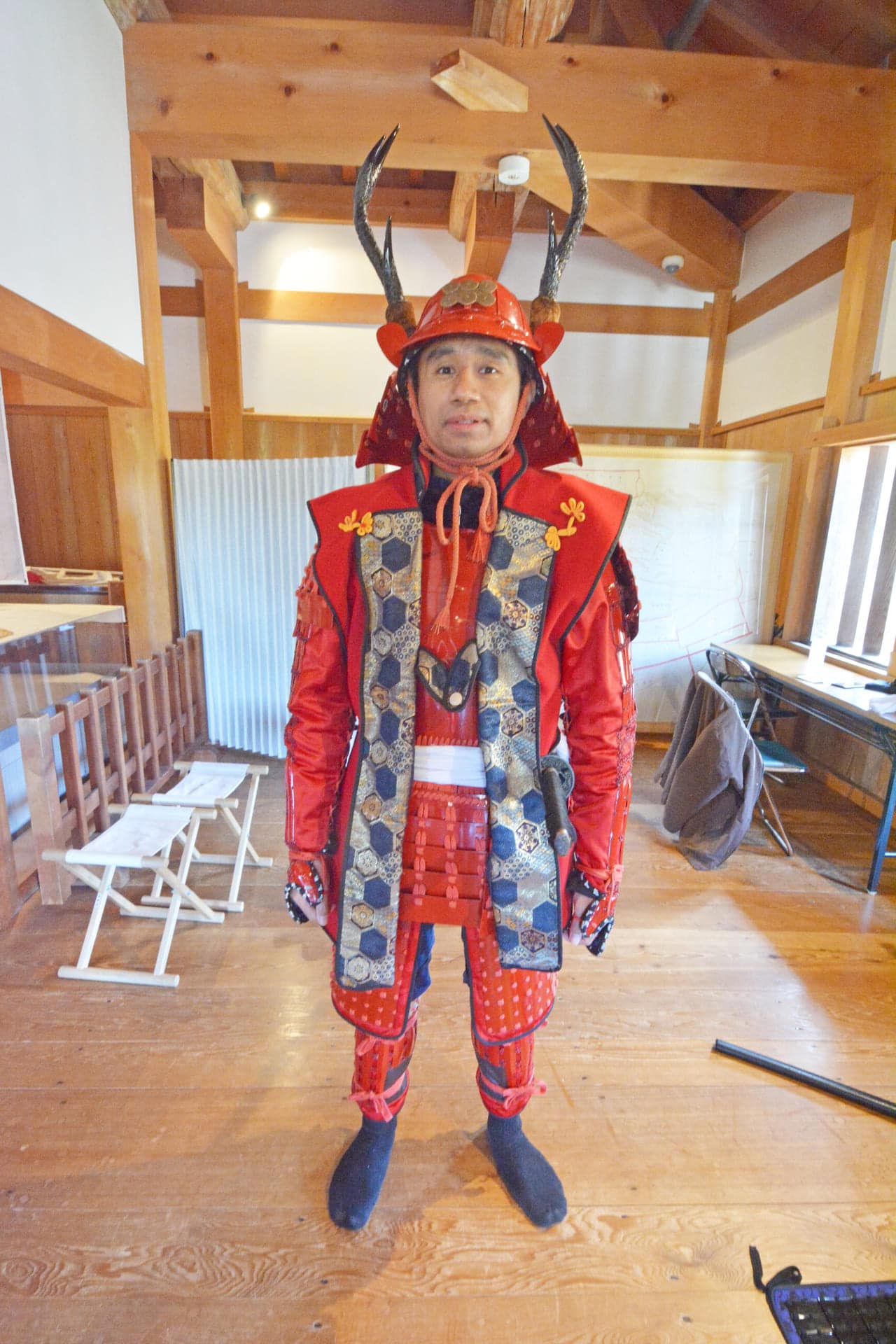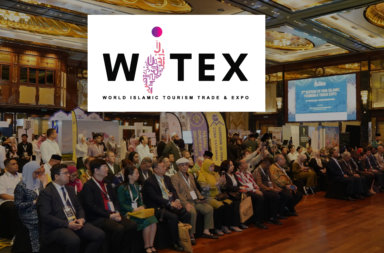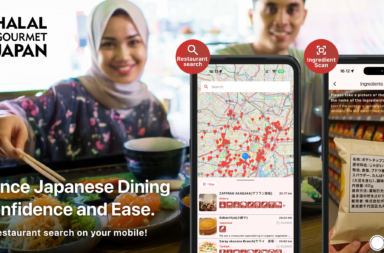Iwashita Kokeshi Museum
Iwashita Kokeshi Museum is a museum for kokeshi, a traditional Japanese doll crafted as a toy for children and has no arms and legs. The museum is at 18 mins walk from Naruko-Onsen station and has various size and design of kokeshi. Each kokeshi is painted with different expressions and colors.
There is a craftsman with a 40-year of experience in making a kokeshi we can watch from a glass window as we can see a lot about how the doll is crafted.


Alhamdulillah, we were allowed to experience to paint a kokeshi. We were served 3 colors; green, red, and black with various sizes of brushes.


Seeing the craftsman do the work, it seems pretty easy to paint the kokeshi, but in fact, it doesn’t! There we understand how difficult and detail the work is. A kokeshi craftsman needs to have 10 years of apprenticeship before he/she can sell the kokeshi he/she made to the public.
Make The Soba By Yourself!
Soba is one of the well-known Japanese noodles made from buckwheat, as you can find almost in all areas in Japan. The noodle is mostly handmade because it is said that soba noodle made by the machine will not have a great taste as handmade. This time we got an opportunity to have soba making experience at the Shogimura Tendo Tower where we will make the soba noodle from zero.

The chef shows us how to make the soba noodle
We start by mixing the flour with water little by little to make a nice dough and then flatten it to be ready to cut in size. It might look simple but actually, it isn’t! We were taught that every step has a specific technique from the way to mix the water to the flour until to flatten and cut the noodles to produce a soba noodle with great taste. Making in the wrong techniques will make the noodle tastes will be degraded.



To be able to experience the soba making, you will need to make a reservation with a minimum of 2 people with costs 1,430 yen (+tax).

We were allowed to do pray in the common room in the Tower so feel free to consult the staff.
Since the museum is located close to Yamadera temple, you can go straight to the Tower after enjoying the temple.
Safflower Dyeing Experience
During the Edo era, safflower, or in Japanese called “benibana”, is very high in value. It was said 100 times of rice value and 10 times of gold. The benibana is not native in Japan but was brought from China during the 3rd century, then the plant is planted in Japan, especially in Yamagata prefecture, one of an area in the Tohoku region which mostly appears in yellow while only 1% is red.
Still in the Shogimura Tendo Tower, we can experience fabric dyeing which then we can bring home as a gift. The experience is available at a price of 1,430 yen (+tax)/person with a minimum of 5 people.


Pottery Experience
In the Tohoku, there is a workshop named Zao Yaki Manpugama, a pottery shop run by two sisters, which is quite rare since most of the pottery industry is dominated by men.

When stepping into the shop, a myriad of bowls and other cups displayed beautifully at the rack. The Japanese cup is different as you can find out from its shape. Mostly it appears simple or sometimes has a bend or tilted. Some of the design showing an imperfect form of cylindrical shape. That imperfection is ‘perfect’ from the Japanese concept of beauty “Wabi Sabi” (means, “the beauty in imperfection”)

In local dishes in Japan, you will often see a small bowl or tray that is chosen depending on the mood and season, so it will complete the taste of Japanese food mood itself.
The workshop offers various types of courses in experiencing the pottery. You can walk-in if any seats are available, but we recommend making a reservation for a smoother experience. The staff can speak English so you can experience the pottery at ease. The workshop is priced from 2,900 yen to 4,900 yen per person.

In visiting the workshop, we recommend using private transportation.
Cheese Making Experience
Zao Dairy Center offers an experience of making cottage cheese. The cheese from Zao Dairy Center is comparatively low in calories and higher protein than common cheese which is perfect especially for those with health-conscious.
To experience cheese making, you will need to make a reservation at least 1 week in advance. It costs 600 yen per person for a 30-min session.


Before leaving the shop, we found an interesting product. It is a drink called “molk” that is made from whey. It has a slightly taste of milk and a bit sour just like cream cheese. For those who live in Japan, you can do purchase from their online shop.

Shiroishi, a Japanese Castle in Tohoku
After finishing find the artisans in Tohoku, now we spend a little bit of time visiting the Japanese castle called Shiroishi castle. If going during the spring season the view is very good. During the trip to Tohoku, this is the only place where we can try to wear a samurai costume. Kimono-wearing experience can be found in many places in Japan, but samurai is very much rare.
The entrance fee is 400 yen.


Halal Ramen Shop “Dashiro NIBO” in Sendai
We went back to the city center of Sendai. We decided to have lunch first at halal ramen shop Dashiro NIBO which has 2 menus Muslims can choose from and is fish-based. The ingredients are Kombu (a type of seaweed), shiitake mushroom, yuzu (a type of citrus), and Japanese mackerel. The halal ramen for sure is using vegetable oil and the price is 950 yen.





Sendai Islamic Center
After having lunch, we go straight to Sendai Islamic Culture Center to pray. The place is easy to be accessed if using a smaller type of transportation. At that time, we met a Japanese Muslim. He is already a veteran and it seems already reverted to Islam a long time ago. Now even at his age, he still learning the Arabic language. As per said by him, if learning Arabic it will make it easier to understand Al-Quran.


We go back to Sendai station to return to Tokyo using the bullet train. May this brings more benefit to Muslims when visiting Tohoku. There have several things we can pick as guidance. Furthermore, visitors can see Tohoku as a place for a breathtaking holiday.


